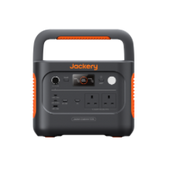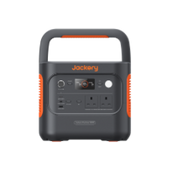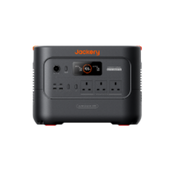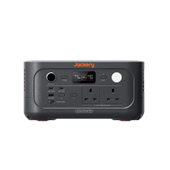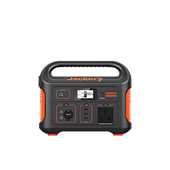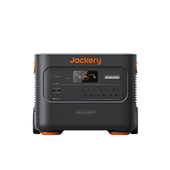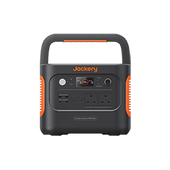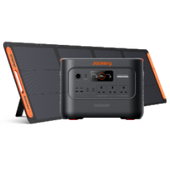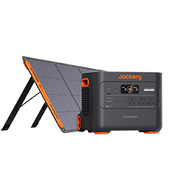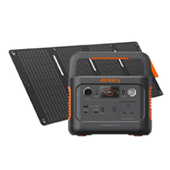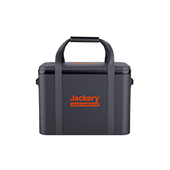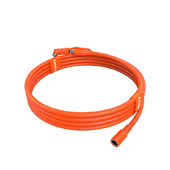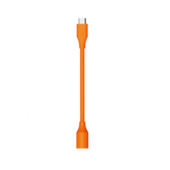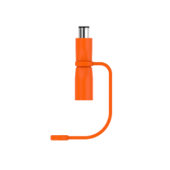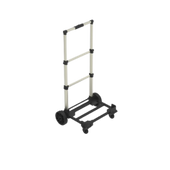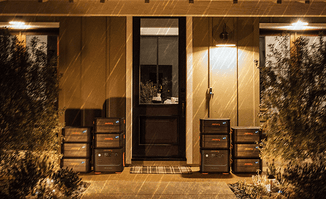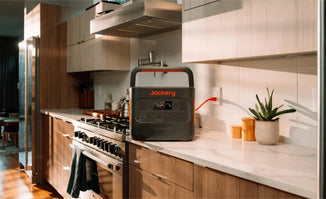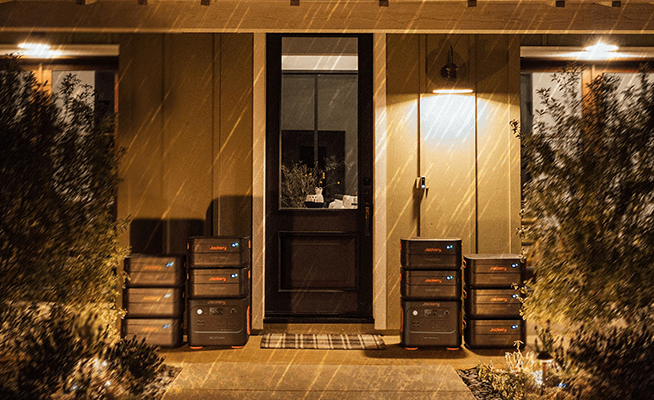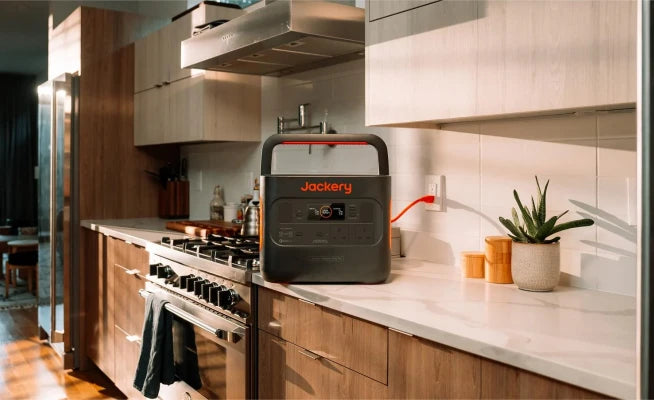From planting to lawn maintenance to garden landscaping, people usually need to invest a lot of energy to keep their gardens in good condition. However, in this modern society, most people lead busy lives, and not everyone has the time to care for their gardens.
Low-maintenance gardens save time and energy and reduce long-term costs, making them suitable for many people's needs. So, what are some practical low-maintenance garden ideas that can be adopted? In this blog, we will explore and explain 10 low-maintenance garden ideas.
|
Key Takeaways: |
|
Who Needs a Low-Maintenance Garden?
When faced with the problem of lacking the time, ability or enthusiasm to maintain a garden, the most common answer is to create a low-maintenance garden. Creating a low-maintenance garden means reducing maintenance time and designing a space that enhances the natural beauty of the surroundings. Here are typical groups of people who need low-maintenance garden ideas:
Gardening Novices
Gardening novices are usually inexperienced. Judging plants' needs is challenging, and it is easy for plants to die due to excessive or insufficient care. Low-maintenance gardens can quickly build their confidence and avoid frustration.
Busy Office Workers
Busy office workers experience high daily work pressure, long commutes, and limited weekends or free time. It isn't easy to maintain the garden frequently. Low-maintenance gardens do not require daily watering, pruning, or weeding and do not become a burden after work.
The Elderly
The elderly have reduced physical strength and limited joint flexibility. Bending, kneeling, and lifting heavy objects become difficult or dangerous for them, making it difficult for them to complete heavy garden maintenance tasks. Low-maintenance gardens can give the elderly more time to enjoy the garden instead of working.
People Who Pursue a Simple Life
People who pursue a simple life usually prefer a simple and tidy environment and hate cluttered or high-maintenance decorative elements. Low-maintenance gardens are more in line with the concept of simple living.
Environmental Groups
People with strong environmental awareness usually hope to reduce their water and electricity consumption when maintaining their gardens and protecting biodiversity. Low-maintenance gardens can generally reduce the burden on the environment.
10 Low Maintenance Garden Ideas
Many people dream of having a beautiful garden, but not everyone has plenty of free time to maintain it. For those who love a lovely outdoor space but lack the time to keep it, try some low-maintenance garden ideas to create a beautiful outdoor space that doesn't take too long.

Idea 1: Consider Ditching a Traditional Lawn
Traditional lawns require regular mowing, fertilisation, and even pest control. Therefore, consider ditching the high-maintenance traditional lawn and switching to artificial turf. Modern artificial turf is as beautiful as a well-maintained lawn, but it does not require mowing, watering, and fertilisation and can withstand harsh weather.
Idea 2: Choose Perennials
Annual plants need to be replanted every season. Perennial plants, on the other hand, live for at least 3 years and automatically re-grow from the roots every year, requiring only occasional division and pruning. Many perennial plants, including hydrangeas, irises, lilies, peonies, and sage, are easy to maintain.
Idea 3: Put on Mulch
Mulch can help your low-maintenance garden in many ways, from suppressing weeds and regulating soil temperature to retaining moisture. Mulches that people use when creating a low-maintenance garden include ground cover plants or organic mulches. Organic mulches include wood chips, bark shreds, pine needles, etc., while ground cover plants include carpet roses, bluebells, and hardy geraniums.
Idea 4: Replace Flowers with Shrubs
Shrubs are generally more robust, drought-resistant, and less susceptible to pests and diseases than herbaceous flowers, which require careful care. They can form a stable structure and do not need to be replaced frequently; they only need a little pruning at the changing seasons. Shrubs that can be planted may include mountain juniper, holly, hydrangea, roses, sea buckthorn, etc.
Idea 5: Lay Stone Paths
Paving paths with pebbles, slats, or gravel is beautiful and prevents the soil from being trampled. Complex paths reduce the ground area, which requires maintenance tasks such as mowing, watering, and weeding to a certain extent. Materials such as stones, slats, and gravel require almost no maintenance.
Idea 6: Choose Flower Beds Instead of Flower Pots
The soil in flower pots is small in volume, more likely to dry out, and requires more frequent watering. The soil in flower beds is large in volume and has much better water retention, significantly reducing the watering frequency in summer. The soil environment in the flower bed is also more stable, which is conducive to the growth of plant roots, and the plants are more drought-resistant.
Idea 7: Install Raised Beds
Raised beds have a neat appearance, good drainage, reduced weed growth, and are at an appropriate height. Planting vegetables or flowers in raised beds is convenient for bending over to care for them and avoids soil compaction problems. Raised beds that do not require frequent bending over are a friendly design, especially for the elderly or those with limited mobility.
Idea 8: Use Laminate Flooring to Build a Leisure Area
Build a terrace or leisure area with waterproof and durable laminate flooring instead of traditional masonry or wood floors. Compared with traditional wooden floors, terraces built with laminate flooring can be easily cleaned with soap and water without needing painting or staining and have strong corrosion resistance.
Idea 9: Install an Automatic Irrigation System
Automatic irrigation systems are the most time-saving and labour-saving way to water, especially for people who often go out. Set a timer or sensor mode, and the automatic irrigation system will irrigate accurately according to the plants' water needs to avoid overwatering or drought. For example, drip irrigation systems can also deliver water directly to the roots of plants with minimal waste, prevent leaves from getting wet, and reduce diseases, making them very suitable for flower beds, vegetable gardens, and bushes.
Idea 10: Invest in Solar Power Generation Equipment
Solar power generation equipment mainly provides green energy for electrical equipment in the garden (such as irrigation systems or garden lights), reducing operating costs. This not only reduces electricity bills, but also conforms to environmental protection.
For example, you can use a solar generator (such as Jackery Solar Generator 1000 v2 / 500) to power electric garden tools such as lawn mowers, instead of setting up separate cables for the garden.
How to Build a Low-Maintenance Garden?
If you are determined to build a low-maintenance garden, careful planning and design are required in the early stage. After taking some low-maintenance garden ideas, you can follow the following steps to implement them:

Step 1: Assess the Outdoor Area
The first step in designing a low-maintenance garden is to assess the effective outdoor area. In addition to the location of the low-maintenance garden, you must also understand the climate type and the length of light in the area to choose the right plants. Then, check the slope and drainage of the ground to avoid areas with stagnant water.
Step 2: Soil Testing and Improvement
Good soil can be the foundation for creating a low-maintenance garden because healthy plants are more resistant to pests and diseases and require less care. Purchase a home soil testing kit or send samples to a laboratory.
Soil analysis can help you identify your soil's pH and select appropriate plants. Most plants prefer neutral soil with a pH of 6.5 to 7.0. It can also tell you which amendments are unnecessary or missing from the soil. Finally, based on the soil test results, compost and other organic materials should be used to improve the native soil, adding nutrients, improving drainage, and supporting beneficial soil microorganisms.
Step 3: Design and Plan Your Low-Maintenance Garden
Good design and planning will significantly reduce your garden's maintenance and costs. Create a low-maintenance garden plan for your budget and desired style, and determine the types of plants, hardscape, and furniture you want.
|
Simplify the Layout |
Reduce complex curves and fragmented small flower beds to create clear divisions. Combine flower or shrub planting areas to reduce border maintenance. |
|
Add Permanent Facilities |
When creating a low-maintenance garden, consider adding permanent facilities such as patios, decks, pavilions, gazebos, fences, or walls. |
|
Incorporate Hardscape |
Add hardscape, such as walkways or paving stones, to connect different areas of the low-maintenance garden. |
|
Choose Low-Maintenance Facilities |
When creating a low-maintenance garden, you need to consider aesthetics, but you also need to consider the difficulty of maintenance. Try to choose facilities that are easy to maintain and require less maintenance time. For example, replace hedges that need to be trimmed regularly with fences. |
|
Use Durable Outdoor Furniture |
Outdoor furniture that can withstand the weather is more expensive, but it costs less to maintain. For example, composite benches are more corrosion-resistant than ordinary wooden ones. |
Things to Avoid When Building a Low-Maintenance Garden
The core principle of creating a low-maintenance garden is reducing the workload. Therefore, avoiding the following eight common misunderstandings when planning and designing can reduce maintenance costs and time investment.

Large Lawns
Large lawns may look neat, but they hide invisible labour. Large lawns are often considered one of the most time-consuming maintenance projects because they require regular mowing, watering, fertilisation, weeding, perforation, and grass seed supplementation.
Too Many Plants in Pots
Although pots are flexible, too many can easily become a burden. Pots have poor water retention and must be watered frequently in hot and dry weather; otherwise, the plants will easily wilt and die. In addition, potted plants need to be fertilised, repotted, and moved regularly.
A Large Number of Plants that Need to Be Transplanted
Potted plants and seedlings usually need to be potted and grown indoors until they are large enough to be planted outdoors. Frequent transplanting damages the plant roots and requires continuous layout adjustments.
Dense Hedges
While they can create a sense of privacy, fast-growing hedges that require frequent pruning to maintain their shape can take up a lot of time and energy from gardeners. Don't forget to deal with the trimmed branches and leaves, too.
Plants that Reproduce Too Quickly
Plants that reproduce too quickly, such as mint, can spread wildly, taking up space from other plants and requiring more time to clean up.
Complex Garden Design
Over-pursuing a garden's layering, geometric shapes, or artificial decorations can lead to long-term work in pruning, cleaning, and maintaining structures. For example, shaped plants that require precise pruning require much time and effort to maintain.
Difficult Access to Irrigation Water
Gathering plants far from water sources or dragging long hoses through complex areas can significantly increase the time and energy required to water.
Ignoring Soil Health
Poor, compacted, or poorly drained soils can cause plants to grow poorly and require constant remediation later. It's best to improve the soil before planting, such as adding organic matter and adjusting drainage.
Is a Low-Maintenance Garden Right for Me?
Low-maintenance gardens are becoming increasingly popular as a style of garden design that combines beauty with ease of care. But is it right for you? This depends on your circumstances, including your gardening needs, lifestyle, and preferences.

Time Available for Gardening
Consider how much time you can and are willing to dedicate to garden maintenance. A low-maintenance garden may be the best option if you have 1-3 hours a week or less to spend gardening. Alternatively, instead of constant gardening, you would want to spend your leisure time relaxing, entertaining, socialising, or pursuing other interests. If you dislike or cannot do heavy work such as turning the soil, pruning a vast area, and watering frequently, a low-maintenance garden is a better option.
Garden Maintenance Budget
A low-maintenance garden can help you reduce your garden maintenance expenses. However, low maintenance does not mean zero cost, and its initial investment is usually high, such as purchasing perennials, laying hard paving or ground cover, and installing a drip irrigation system. The primary purpose of a low-maintenance garden is to significantly reduce the subsequent ongoing expenses and labour costs, such as watering, fertilising, weeding, and replacing plants.
Personal Gardening Preferences
Finally, consider your personal gardening preferences. For example, do you like to try different plant varieties and constantly redesign your garden? Or do you prefer a natural style, native plant communities, and uncut landscapes? Often, the latter prefer to create a simple, low-maintenance garden.
|
Pros |
Cons |
|
Save time and energy Reduce long-term costs Eco-friendly Highly adaptable |
High initial investment Limited plant selection Still requires basic maintenance |
In short, if you have limited time to devote to gardening, appreciate the natural, simple garden style, and have a specific budget for initial renovation. A low-maintenance garden is the best choice.
Jackery Solar Generators for Low-Maintenance Garden
A Jackery Solar Generator can be an incredibly valuable asset for building and maintaining a low-maintenance garden, primarily by providing convenient, clean, and portable power for the tools that enable low-maintenance strategies.
Low-maintenance gardens often start with good soil. If you're building raised beds or amending heavy clay, a Jackery can power electric tillers/rotavators to break up and mix soil efficiently, reducing manual labour. A low-maintenance garden often benefits from drip irrigation or soaker hoses. A Jackery can power small water pumps to test lines, fill a reservoir, or charge batteries for cordless drills needed to install components.
Pairing the Jackery Portable Power Station with SolarSaga solar panels creates a self-sustaining power system. This means you can continually recharge the unit using sunlight, reducing your reliance on grid electricity and carbon footprint. This aligns perfectly with the eco-conscious mindset often associated with low-maintenance gardening.
Jackery Solar Generator 1000 v2
The Jackery Solar Generator 1000 v2 (which combines the Explorer 1000 v2 power station with compatible SolarSaga 100W or 200W solar panels) is an excellent choice for building and maintaining a low-maintenance garden. Its specific features make it well-suited for powering the tools that enable efficient garden care.

Powering Essential Electric Garden Tools: The Explorer 1000 v2 boasts a 1200W continuous AC output (2400W surge) and a 1070Wh capacity. This power profile is ideal for standard electric garden tools, such as tillers, chippers, hedge trimmers, pole saws, water pumps, and more.
Eliminates Extension Cords: You won't be limited by the length of extension cords or the location of power outlets. Carry the 1000 v2 directly to where you work in the garden, no matter how far from your house. This significantly increases efficiency and safety.
Solar Recharging: This is a significant benefit for a low-maintenance garden. Pair the Explorer 1000 v2 with Jackery SolarSaga solar panels. You can recharge the power station using sunlight during work or breaks. This means free, renewable energy for your garden tools, aligning perfectly with a sustainable gardening philosophy.
Silent Operation: Unlike noisy gasoline generators, the Jackery operates almost silently. This ensures a peaceful gardening environment, won't disturb neighbours, and allows you to enjoy the sounds of nature.
LiFePO4 Battery: The 1000 v2 uses a LiFePO4 (Lithium Iron Phosphate) battery, known for its long lifespan. It's rated for 4000 charge cycles to 70%+ capacity, serving your low-maintenance garden needs for many years. This makes it a sound investment.
Jackery Solar Generator 500
The Jackery Solar Generator 500 (which combines the Explorer 500 portable power station with a SolarSaga 100W solar panel) can be a fantastic asset for building and maintaining a low-maintenance garden.

Electric Trimmers/Edgers (for tidying borders): Many electric string trimmers or edgers operate within the 500W continuous output of the Jackery 500. This is perfect for keeping your garden neat without relying on gas or long extension cords.
Small Electric Cultivators/Tillers (for occasional soil amendment): The Jackery 500 can power a small electric cultivator (often around 200-400W) to break up small patches of soil for planting or adding amendments.
Electric Leaf Blowers/Vacuums (for clearing paths): A small electric leaf blower (typically 300-500W) is easily powered for quick clean-ups of paths and patios. If your low-maintenance garden includes a minor water feature, the Jackery 500 can power a small pump for a few hours.
Charging Cordless Tool Batteries: Even if you primarily use battery-powered garden tools (excellent for low-maintenance gardening), their batteries need charging. The Jackery 500 can recharge multiple batteries for cordless drills, string trimmers, hedge trimmers, or even a small battery-powered chainsaw throughout the day.
Quiet Operation: Unlike noisy gas generators, the Jackery 500 operates quietly. This allows you to work in your garden without disturbing neighbours, wildlife, or your peace, contributing to the serene atmosphere often desired in a low-maintenance garden.
Portability and Convenience: Weighing around 14.1 lbs (6.4 kg), the Explorer 500 is very portable. Its compact size and handle make it easy to carry around your garden as you move from one task to another. No more dragging long, cumbersome extension cords across your lawn, which can be a tripping hazard and limit your reach.
FAQs
The following are the frequently asked questions about the low-maintenance garden ideas:
1. What is the lowest-maintenance garden?
Creating a low-maintenance garden entails reducing the number of jobs that require regular, frequent labour, such as watering, weeding, pruning, fertilising, insect management, and leaf clean-up.
A low-maintenance garden should consist primarily of native, hardy, drought-tolerant perennials, evergreen shrubs, and small trees. Plants should be maintained to a minimum and placed in patches. Large areas should be covered with gravel, bark, or ground cover, leaving little or no lawn.
2. What plants can be added to a low-maintenance garden?
Plants planted in a low-maintenance garden should only require minimal attention. Drought-tolerant plants, such as lavender, rosemary, and thyme, require little irrigation and are simple to keep.
Perennials, such as echinacea, coreopsis, and daylilies, require less maintenance than annuals because they grow year after year without being replanted. Fountain grass and blue fescue are ornamental grasses that require little upkeep, saving you time and energy in the garden.
3. What are some low-maintenance garden ideas that the average person can adopt?
Here are some low-maintenance garden ideas that are easy for the average person to adopt, especially for beginners:
Significantly reduce the size of the lawn
Prioritise perennials
Thicken organic mulch
Install raised beds
Divide the garden into large, clearly defined functional areas
Use flagstones or gravel to create clear paths
4. Is a maintenance-free garden completely maintenance-free?
No. A maintenance-free garden does not imply that it is entirely maintenance-free. While certain gardens might be constructed to need little maintenance, no garden is completely maintenance-free. Even if the garden is planted with drought-tolerant plants, it still needs watering and the occasional pruning or weeding. Paving stones, patios, and outdoor benches can all acquire dirt, trash, and weeds, necessitating periodic cleaning and weeding.
Final Thoughts
After reading the above, you can learn 10 practical low-maintenance garden ideas. These ideas can help you save time, reduce the maintenance work required for the garden in the future, and spend more time enjoying the garden's fun. Low-maintenance gardens are a good choice, especially for gardening novices, busy office workers, the elderly, and other groups.



